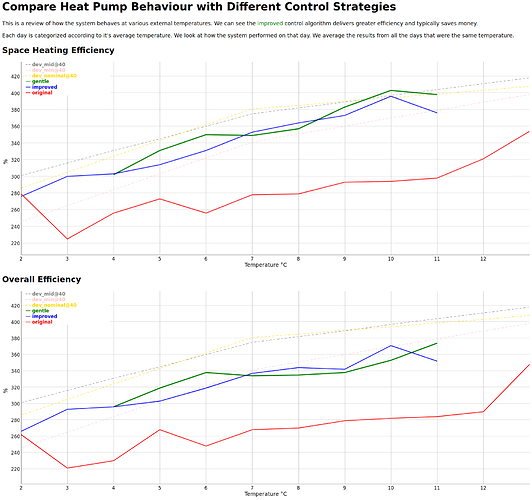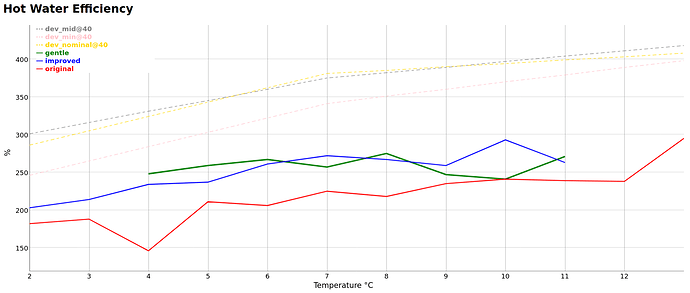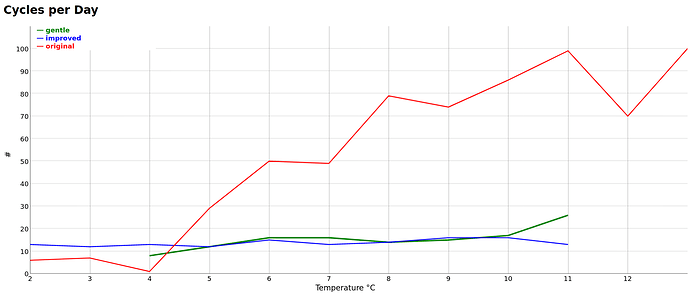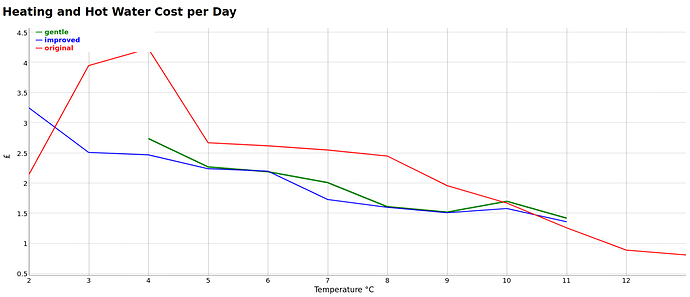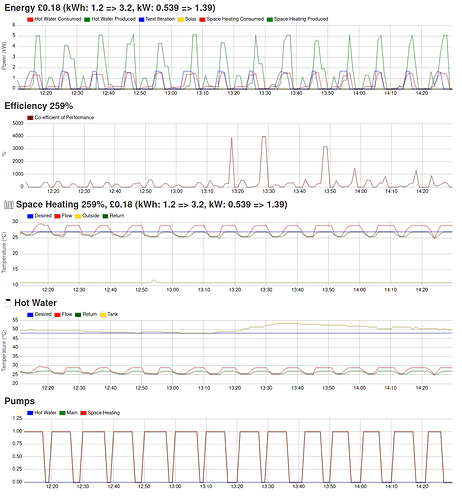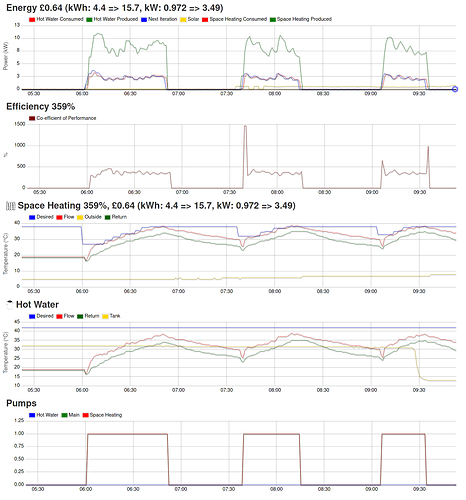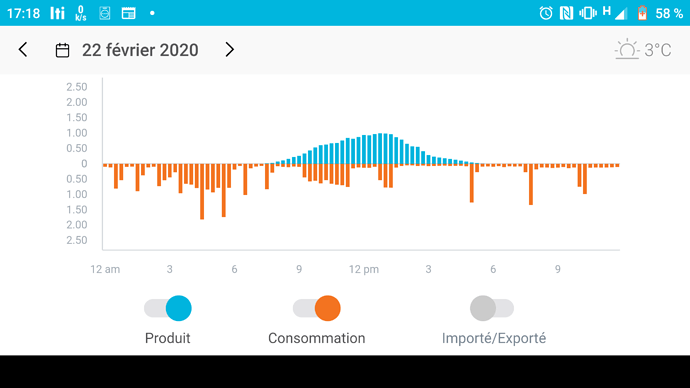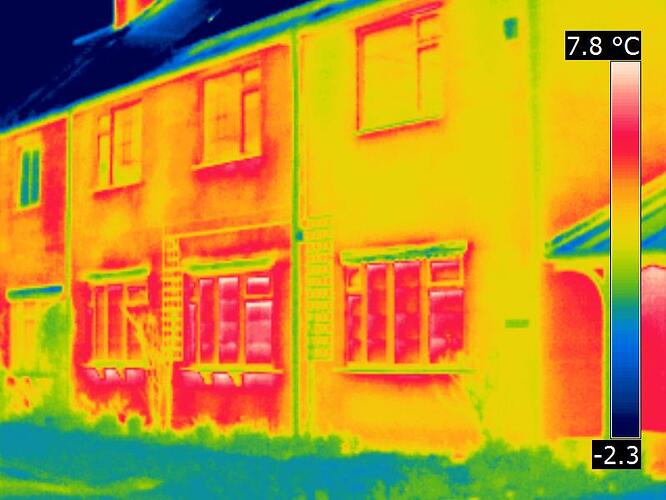I’ve spammed this category with comments about each of the tweaks I’ve done to the heat pump system. I used the prefix “Improve efficiency” like this topic.
Of course lots of failed experiments have gone by the wayside.
I class the default behaviour as “original”. In November I decided take computer control and created the behaviour I called “improved”. I tweaked that in January to make it more “gentle”. Each of those experimental periods is represented by a solid line on this summary graph.
The gold dashed line “dev_nominal” is how the vendor expects their system to perform with flow set to 40Celsius. The other dashed lines are some of their measurements with other power levels.
Since I had it installed in October space heating has been my primary energy consumer so I’ve focussed mostly on improving that. My hot water is a bit more efficient after my changes, but not markedly.
As my heat pump is rated for something like -2Celsius it’s over-powered for most of the work it’s doing. Luckily it modulates pretty well so I’ve been able to take advantage of that. By implementing the on / off strategy I’ve been able to drastically reduce the cycling.
Yes, you’re reading that right, it was cycling 80 times a day using the original setup.
You might be wondering if I’ve saved any money by doing this. I should obviously mention that’s not my motivation. Even if I paid myself minimum wage for the time spent on this I wouldn’t even be close to break-even.
What I’m trying to do is to get the system running more efficiently with the hope of improving how heat pumps are deployed in the field. Clearly my experience is limited to just one heat pump in one house for five months.
I’m sharing what I’ve learned to help improve things.
Perhaps one way of doing this will be to extend Emoncms to provide an open platform for people to experiment with.
Anyway, here’s the impact on costs. I don’t have an opinion on how useful those savings are.
